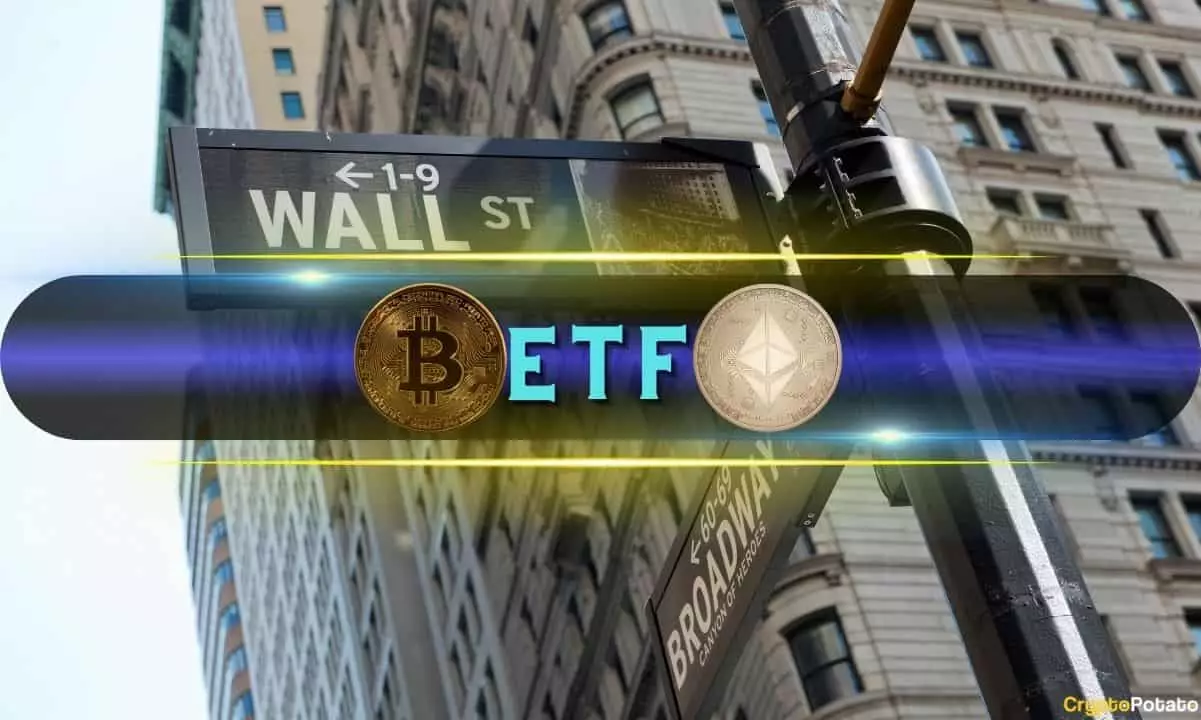The recent developments in the cryptocurrency market, especially regarding Bitcoin and Ethereum exchange-traded funds (ETFs), have captured the attention of investors and analysts alike. The trading week following Donald Trump’s decisive victory in the 2024 presidential elections saw an extraordinary surge in Bitcoin ETFs, contrasting starkly with the struggles faced by Ethereum counterparts. This article delves into the contrasting trajectories, analyzing the factors driving these divergent paths and their implications in the broader digital asset landscape.
In a remarkable display of investor confidence, Bitcoin ETFs in the United States witnessed a tremendous influx of capital over the past trading week. Starting with modest inflows of $254.8 million on Monday, the momentum accelerated as the week progressed. Tuesday saw inflows spike to $829.5 million, followed by $773.4 million on Wednesday, culminating in an astonishing $1.005 billion on Thursday. By Friday, net inflows remained robust at $490.3 million. According to reports from Farside, the cumulative inflows for the week amounted to an impressive $3.353 billion.
At the epicenter of this financial whirlwind was BlackRock’s IBIT, which consistently attracted substantial capital, exceeding $500 million on three consecutive days. This surge in assets under management (AUM) catapulted IBIT’s total AUM to over $31 billion. The financial performance of Fidelity’s FBTC and Ark Invest’s ARKB also contributed positively, with both funds showing commendable results throughout the week. Ark Invest’s ARKB, in particular, recorded significant net inflows on Tuesday, adding to the collective growth in Bitcoin ETFs.
Simultaneously, the price of Bitcoin mirrored this positive sentiment, rising from around $90,000 on Monday to an impressive $99,825 by Friday. This brief rally brought Bitcoin tantalizingly close to breaching the six-figure territory, signaling a robust market response to both ETF inflows and macroeconomic factors.
In stark contrast to the Bitcoin excitement, Ethereum ETFs faced a concerning week filled with net outflows. Despite the initial success in November, the past trading days brought a slew of challenges, as Ethereum ETFs saw outflows of $39.1 million on Monday, $81.3 million on Tuesday, and continued losses throughout the week. The downturn culminated in a total outflow of $68.4 million for the week, raising questions about investors’ confidence in Ethereum.
Interestingly, while Bitcoin was on the rise, Ethereum managed a modest price increase of over 10%, stabilizing just above $3,400 during the same period. Yet, the disparity in ETF performance may hint at deeper market sentiment—while Bitcoin garners optimism, Ethereum’s recent underperformance illustrates a potential lack of confidence among investors, who seem cautious about betting on ETH amid volatile market conditions.
The divergent fortunes of Bitcoin and Ethereum ETFs during this period highlight a crucial narrative in the cryptocurrency market. Bitcoin’s surging popularity and institutional backing through ETFs suggest a burgeoning phase of acceptance and legitimacy, particularly in light of Trump’s election victory, which may have altered the regulatory landscape favorably towards cryptocurrencies. Conversely, Ethereum’s struggles pose critical questions about its future performance and institutional interest.
As the market continues to evolve, the awareness surrounding Bitcoin’s dominance and Ethereum’s challenges will be essential for stakeholders. Observers should pay close attention to upcoming regulatory developments, technological advancements within the Ethereum ecosystem, and broader economic indicators that could shift investor sentiments. The next phase for both cryptocurrencies will be determined by their ability to adapt to market conditions and innovate in a rapidly changing financial landscape.
While Bitcoin ETFs bask in a glow of success and investor confidence, Ethereum ETFs grapple with outflows and uncertainty. This juxtaposition serves as a microcosm of the broader challenges and opportunities within the cryptocurrency sector, emphasizing the significance of strategic investment choices and the ever-changing nature of digital assets. Investors and market analysts will need to navigate these complexities to make informed decisions moving forward.
















Leave a Reply